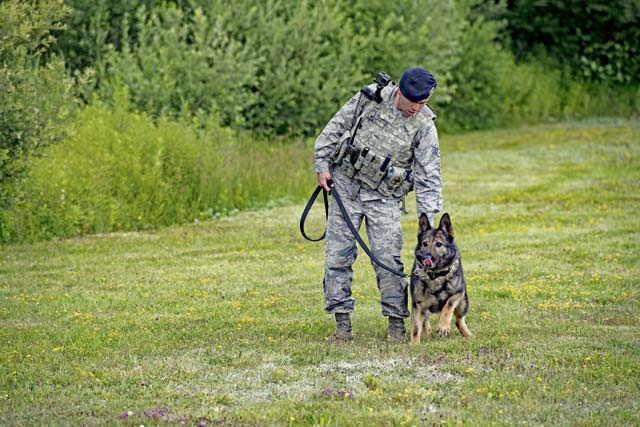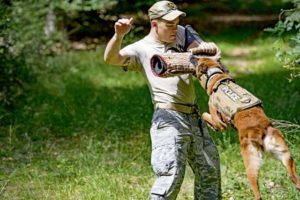
When a Military Working Dog handler arrives at a new K-9 unit, handlers don’t just walk up to their new dog and give commands. If they did, there’s a decent chance the dog will react in a not-so-friendly way.
There’s a level of trust that needs to be established between the dog and the handler for things to run smoothly in the world of K-9.
“They are just like people; they have different personalities,” said Senior Airman Nicholas Willett, 86th Security Forces Squadron MWD handler. “Some marriages work out, some don’t. We just have to work together and find that common interest between you and the dog.”
MWD handlers use different tactics to establish rapport and help them understand the dog’s personality.
“Charly is my second dog,” Willett said. “My first dog was a goofball. He was all about being loved and affectionate. (Charly) is a little different.”
Handlers continue to build trust by spending time with their dog through different activities.
“We have to build that bond, and we do that by bathing them, taking them outside, throwing the ball back and forth, and so on,” Willett said. “It’s a form of exercise for the dog, but they see it as fun.”
While handlers build trust by playing fetch with their dog or brushing their coat, they are also performing routine health check-ups.

“You’re checking for scars, sores, or anything abnormal. So you’re doing health checks and brushing them, and they’re getting loved,” Willett said.
Understanding one another doesn’t end with the initial meet and greet. As MWD handlers continue to work with their dogs, they learn more about each other and how to adapt to one another in order to have a successful partnership.
“There were times when I’ve gone through problems with some training scenarios and he’s saved me, and then there’s some days where he’s not feeling up to it and I got to keep him going and amp him up so it’s fun for him,” said Willett. “If it’s not fun, then they’re not going to want to do it.”
Willett said K-9 units specialize in bomb and narcotic detection. MWDs either learn one or the other, never both. This is to prevent confusion between situations during a real search.
“Our job as a handler is to recognize their change of behavior,” added Willett. “There’s a difference between interest and detection.”
Once the dog goes through initial training at Lackland Air Force Base, Texas, the Air Force assigns them to a unit where they spend the rest of their career working with different handlers as they cycle through. Handlers could go through several dogs throughout their Air Force careers.
“You always get attached to your first dog,” said Willett. “We were very identical in terms of being goofy. We linked very well, and Ssamuel was a great dog. He was definitely a dog that wanted to please. No matter what, he always wanted to do things right.”
Handlers spend anywhere between 30 to 40 hours a week with their dogs. Whether they are training or working real-world scenarios, military working dogs and their handlers grow stronger each day.
“Any small step towards making the bond stronger is definitely gratifying,” Willett said.
Even though MWDs change handlers every couple years, there’s a chance they could be reunited with a previous handler through adoption after their retirement from the Air Force. From there, the bond between dog and handler can continue to grow once again.
The MWDs in the 86th SFS continue to build trust with their furry partners in crime to keep the mission going at Ramstein.
To see more about Ramstein’s MWD handlers, visit https://www.dvidshub.net/video/613337/airmans-best-friend.


